
click image to zoom
£45 How can you inspect a hive without opening it? When you do open it, how do you interpret what you see? And how do unmanaged bees survive without our help? Truly seeing and understanding what is happening in a bee colony is the core skill for all beekeepers. In this comprehensive book you will learn how to ‘read’ bees’…
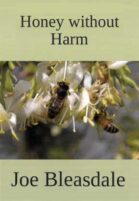
click image to zoom
Many who are concerned about ecology and the ethical treatment of animals argue that eating honey is harmful to bees and the environment. I believe there are valid reasons for their concerns in the way that most honey is produced. Here are some of the practices in worldwide use that I think exploit and harm bees: * Feeding sugar or…
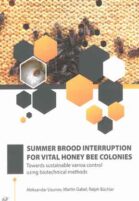
click image to zoom
Aleksander Uzunov
Martin Gabel
Ralph Büchler
The parasitic varroa mite remains the most serious problem for honey bee colonies worldwide. Despite various chemical treatments, many beekeepers still lose their colonies each year. This book sets out the authors' novel vision and practical steps on to how to manage bees for varroa control using a "nature based beekeeping" approach. With clear step-by-step charts on what to do…
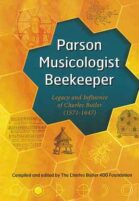
click image to zoom
Compiled and Edited by The Butler 400 Foundation
"Because reading 'The Feminine Monarchie' reveals rather little about the place, the time, and the social life of Charles Butler, it is most fortunate that members of the Basingstoke and District Beekeepers' Association have written and published [this] lovely book ... It provides a splendid view of his world." Tom Seeley. Four hundred years ago, a parson in the small…
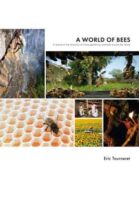
click image to zoom
A quite outstanding world wide photographic record of bees and beekeepers. Internationally recognised bee photographer Éric Tourneret began his great global photographic exploration of beekeeping traditions in the early 2000s. His photographs, taken over ten years in 20 countries on the five continents, record the diversity of honey-gathering methods around the world, from the archaic and physically strenuous to modern…
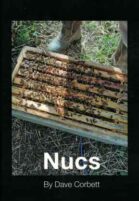
click image to zoom
All you need to know about nuclei colonies and their value. Dave Corbett lives in Bedfordshire, keeping bees with the assistance of his father, John. Dave began beekeeping in 2014, with a single hive in his back garden. From these small beginnings he has managed to expand his beekeeping operations to around 150 colonies, becoming a member of the Bee…

click image to zoom
In Pursuit of Liquid Gold tells tells the fascinating story of the earliest beginnings of beekeeping in South West England with special mention of monastries, weather protection and the beekeepers of the past. It also includes details of surviving bee boles with a very detailed list of them in Devon, Cornwall, Somerset and Dorset. There are 9 colour pictures and,…
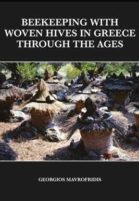
click image to zoom
This book is an original study on beekeeping which, apart of course from the existing modern literature, is based on four pillars: 1. the study of the relevant ancient Roman and Byzantine literature; 2. the study of the works by foreign travelers who visited Greece from the 17th to the 19th centuries to gather information on beekeeping and wicker hives;…
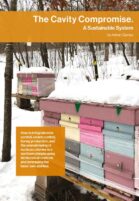
click image to zoom
How to integrate mite control, swarm control, honey production, and the overwintering of nucleus colonies in a northern climate using biotechnical controls and leveraging the bees’ own abilities. People with a beginner’s interest in bees are often disturbed to learn that their bees will die without some form of varroa mite control. I was, and some of mine did. Yet…
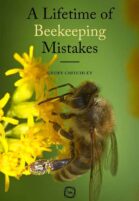
click image to zoom
A Lifetime of Beekeeping Mistakes covers all the basics of managing successful hives from buying in bee stocks and equipment to record keeping, establishing and growing colonies. It considers the merits of different types of hive and provides clear advice on queens, drones, honey extraction, diseases and pests. The book is written from the voice of experience rather than academic…
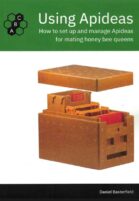
click image to zoom
Queen raising is one of the most rewarding aspects of beekeeping, allowing beekeepers to propagate the desirable characteristics of their best colonies throughout their apiaries. Father and son commercial beekeepers Ken and Dan Basterfield, both holders of the National Diploma in Beekeeping, have been using Apideas to raise their own queens for forty years. Here they present the tips and…
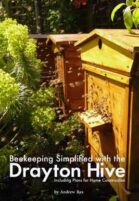
click image to zoom
The Drayton Hive is a hybrid of several established hive designs, combining some of their different strengths and avoiding some of the problems inherent in their use. It does not involve heavy lifting or the use of mechanical extractors for honey production; all-round, all-year insulation is built in, and it requires no extra space for winter storage. In the hive’s…
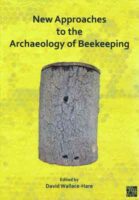
click image to zoom
New Approaches to the Archaeology of Beekeeping aims to take a holistic view of beekeeping archaeology (including honey, wax, and associated products, hive construction, and participants in this trade) in one large interconnected geographic region, the Mediterranean, central Europe, and the Atlantic Façade. Current interest in beekeeping is growing because of the precipitous decline of bees worldwide and the disastrous…
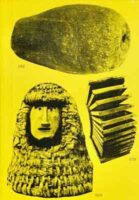
click image to zoom
An artistic project showing how man has housed bees over the centuries. The patenting and success of the modern hive in 1852 largely eliminated diversity in beehive design and its previous techniques have been overlooked. Using an array of archive images, this book uncovers that forgotten history in hive innovation and creates a common ground for future beehive research.
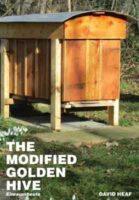
click image to zoom
Horizontal hives with frames are becoming increasingly popular in Europe and North America. One of these is the golden hive or Einraumbeute, developed at Mellifera Association in Germany, based on Dadant-size frames rotated ninety degrees. The resulting deep format allows for a vertically uninterrupted brood nest and a deep honey crown that is good for wintering. This book describes modifications…

click image to zoom
Small-scale beekeeping is an attractive cash crop option for resource-poor farmers in the tropics. It demands little in the way of time, finances or natural resources, and the honey and beeswax harvested can be processed in the home and sold locally. At the same time, pollination by honeybees will increase the yields of many staple food crops. This book, through…
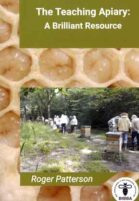
click image to zoom
This book provides help and information for all beekeepers. For BKA officials, demonstrators and apiary managers there is guidance to set up a facility if none exists, with suggestions for improving apiaries already in existence. The ordinary beekeeper who is keen to learn has an indication of what they should seek to gain from their local teaching apiary. There is…
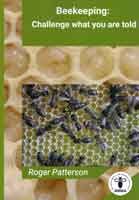
click image to zoom
Have you ever met a beekeeper with fixed opinions about a beekeeping topic? Have you questioned what experience and knowledge they are based on? The craft used to be local, traditionally learnt by observing bees, whereas today, we are bombarded with international communications, promotions, soundbites, sensationalism and the like, with the same information, whether reliable or not, appearing in many…
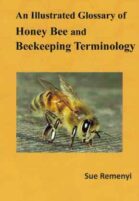
click image to zoom
An Illustrated Glossary of Honey Bee and Beekeeping Terminology is an invaluable reference book for all beekeepers. As with any activity there is always a significant amount of terminology and jargon to get to grips with and this glossary brings together the terminology a beekeeper needs. In addition, more advanced aspects of beekeeping such as the anatomy and biology of…
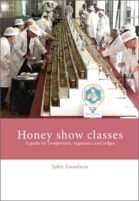
click image to zoom
This book has been written as a guide for everyone involved with honey shows, be it organising, exhibiting or judging. If on the day of the show the book has helped to achieve successful organisation, high standards of exhibiting, well-written and unambiguous honey show schedules, increased interest in honey shows, and more applicants for the BBKA Show Judge certificate, the…

click image to zoom
This book outlines approaches to hive building with more than a single queen. They fall into two distinct categories: single-queen hives sharing common honey storage space and true multiple-queen hives hosting more than one queen. A History of Keeping and Managing Doubled and Two-Queen Hives explains how a honey bee colony with a second laying queen can be established and…
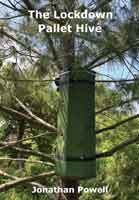
click image to zoom
When many people think of honey bees, they often think of lines of white boxes on the ground, and honey jars. However the natural habitat of a bee is not a box, and neither is it on the ground, and honey is really the bees food, needed to sustain the colony. There are still wild bee colonies, but they lack…
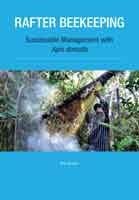
click image to zoom
Eric Guerin is a French biologist specialized in Asian native honey bee conservation and sustainable beekeeping. Based in Southeast Asia since 2008, he has made a special effort to document the work of honey hunters and rafter beekeeping communities, diffusing sustainable honey collection practices, introducing small-scale beekeeping as part of organic agriculture development, raising awareness on native honey bee conservation,…
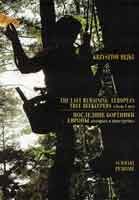
click image to zoom
500+ Wonderful Full Colour Images! Comes with a 20 page English language translation booklet. TO VIEW THE CONTENTS CLICK HERE The book focuses on the ancient tradition of tree beekeeping. Those who cultivate this tradition have the instinct and passion to follow the rhythms of nature, so that they can understand and respect the innate preferences of the bees. Tree…
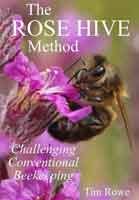
click image to zoom
TO VIEW THE CONTENTS CLICK HERE Ordinary beekeepers everywhere are contributing to the huge pressures honeybees are under. Though well-meaning and hard-working, they are part of the problem that is causing a massive decline in the population of honeybees throughout the world. In this book Tim Rowe challenges the hives and the hive-management we all take for granted, and offers…

click image to zoom
Wereldwijd is er een groeiende interesse voor natuurlijke imkeren. Oude, vaak vergeten soorten bijenkast worden herontdekt en de gangbare imkermethodes die we nu al meer dan een eeuw kennen, worden in vraag gesteld. De Kast van het volk van Abbé Emile Warré (1867-1951) is een voorbeeld van zo’n oude bijenkast die op enorm veel bijval kan rekenen bij de imkers…
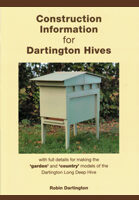
click image to zoom
Robin Dartington made his first Long Deep hives around 1975, to reduce the problems when keeping bees on the roof of a five-storey house. Very simply, the Long Deep hive is a Deep National with a back extension, so avoiding the need for an extra hive when making an artificial swarm. New Beekeeping has now been developed into a comprehensive…
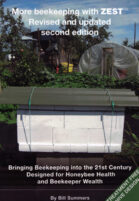
click image to zoom
ZEST (Zero Energy SusTainable) "Beekeepers require a user friendly hive that helps the bees keep warm in Winter, stops them ver heating in the Summer and reduces the risk of varroa and bee related diseases. It must be economical to buy, easy to construct, have minimal maintenance and storage issues, be a hive that is sustainable, that gives the bees…
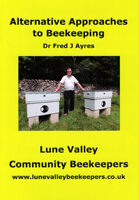
click image to zoom
A basic introduction to alternative forms of beekeeping practiced by some apiarists in the Lune Valley, Cumbria, UK. www.lunevalleybeekeepers.co.uk The notes in this booklet are intended for beekeepers who have some knowledge of conventional beekeeping but wish to explore less intensive and more bee friendly approaches. I have been keeping bees for 20 years and was initially trained as a…
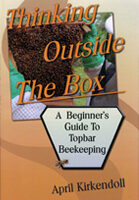
click image to zoom
A topbar hive is both ancient technology and newfangled trend. The main reason this "back-to-basics" hive is finding new supporters is its more natural approach to keeping bees and the novel concept of stepping back and allowing honeybees to make more of the hive decisions themselves. A topbar hive is, in itself, "thinking outside the box", not only because of…
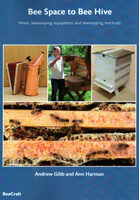
click image to zoom
"This book provides a fascinating insight into how beehives, beekeeping equipment and beekeeping methods have developed over the centuries. Lengthy observation enabled the discovery of the importance of bee space by Revd LL Langstroth, and after this discovery the ingenuity of many beekeepers has solved numerous problems associated with colony management. The evolution of ideas and creations by many well…
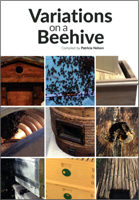
click image to zoom
"Trish Nelson is to be commended on compiling this brilliant book. Whether you are happy with the type of hive and style of management you use, if you are trying to decide which is best suited to your particular situation and needs, or if you are just plain curious, this book will answer all of your questions and satisfy your…
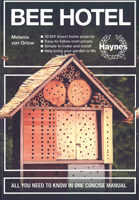
click image to zoom
Solitary bees and other beneficial insects need our help, not just on an international level but in every domestic garden, courtyard and balcony. Creating little homes for insects to lay their eggs in is a really easy way to help the insect population, and at the same time bring wildlife diversity and plant propagation to your outdoor spaces. This book…
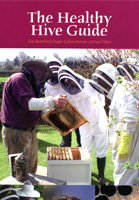
click image to zoom
Dan Basterfield
Roger Cullum-Kenyon
Ivor Davis
This second edition of the Healthy Hive Guide is provided to help both new and experienced beekeepers identify problems within their honey bee hives. Each of the images has a short explanation; however it is clear that not all problems manifest themselves in exactly the same way every time. It is sometimes enough for beekeepers to recognise that they may…
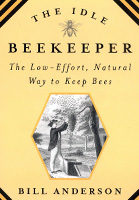
click image to zoom
From building a hive to harvesting honey, a top urban beekeepers shows how to keep bees the simple way. Global bee populations have been rapidly declining for years, and it's not just our honey supply that's at stake: the contribution of bees to the pollination of various crops is essential to human survival. But even in industrial apiaries, bees are…
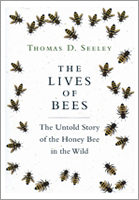
click image to zoom
The Latest important book from a world leading scientist! (Hardback, 432 pages) Humans have kept honey bees in hives for millennia, yet only in recent decades have biologists begun to investigate how these industrious insects live in the wild. The Live of Bees is Thomas Seeley's captivating story of what scientists are learning about the behaviour, social life, and survival…
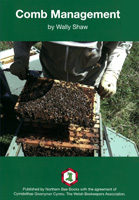
click image to zoom
In a sense the combs in a honey bee nest are an extension of the bees that made them and it is really the bees and combs together that constitute the colony. In fact, the average honey bee worker spends 95% of her life on the combs in the hive. The combs are built to be multi-purpose in the sense…
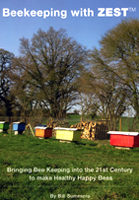
click image to zoom
Bee keepers require a user friendly hive that helps the bees keep warm in winter and stops them overheating in the summer. It must be economical to buy, easy to construct, have minimal maintenance and storage issues, be a hive that is sustainable and gives ample area for honey storage. Beekeeping with Zest claims all of these and the volume…
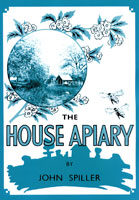
click image to zoom
A reprint of the first modern book on bee houses. John Spiller, a Taunton based solicitor explains clearly the advantages of this type of beekeeping
.
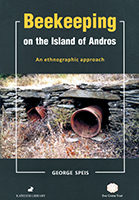
click image to zoom
George Speis takes the reader through beekeeping culture and the heritage that surrounds beekeeping as seen on the Isle of Andros.
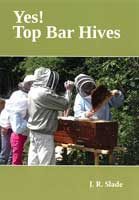
click image to zoom
The author suggests that Top Bar hives offer a gentler way of practicing the craft. "We have a duty to our bees and as beekeepers we must be in the forefront of change for nature, not mere puppets in some commercial enterprise". This volume gives advice on managing colonies in top bar hives and provides notes and illustrations for the…
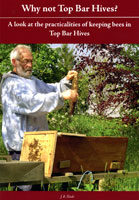
click image to zoom
Jim Slade suggests a system of beekeeping, based on years of experience, which is natural, sustainable and economical. There are also constructional details for those who wish to make their own hives.
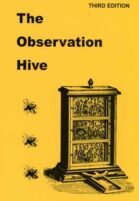
click image to zoom
When first published, this was the only book on the observation hive. Since then there have been others but Karl Showler has written one which will stand the test of time.
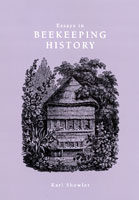
click image to zoom
The foundations of modern movable comb beekeeping were laid by men and women with inquiring minds who saw that the methods then in use could be improved by careful observation of the behaviour of bees. In these essays Karl Showler has looked at the beekeeping methods used in Europe, the United Kingdom and Ireland, Canada and the United States. This…
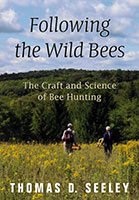
click image to zoom
Following the Wild Bees is a delightful foray into the pastime of bee hunting, an exhilarating outdoor activity that used to be practiced widely but which few people know about today. Thomas Seeley, a world authority on honey bees, vividly describes the history and science behind this lost pastime and how anyone can do it.
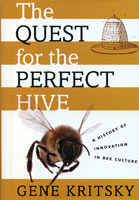
click image to zoom
In The Quest for the Perfect Hive, entomologist Gene Kritsky offers a concise, beautifully illustrated history of beekeeping, tracing the evolution of hive design from ancient Egypt to the present. Kritsky guides us through the progression from early mud-based horizontal hives to the ascent of the simple straw skep (the inverted basket which has been in use for over 1,500…
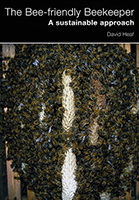
click image to zoom
In recent years, beekeepers on several continents have been suffering heavy losses of colonies. If we, systematically investigate factors causing the losses, we can justifiably ask whether the way in which honey bees are kept is part of the problem. Could hive design, frames, foundation, intrusion, artificial queen breeding, drone suppression, queen excluders, artificial feeding, medication, transhumance and overstocking -…
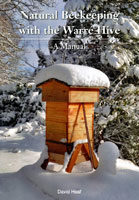
click image to zoom
This inspiring, practical, clearly laid out book contains everything you need in order to build and run a Warré hive, Topics include tools, siting, obtaining and hiving bees, monitoring, feeding, wintering, enlarging the hive, harvesting and extracting honey with simple kitchen equipment. An ideal book for the aspiring natural beekeeper.
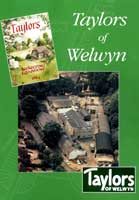
click image to zoom
Thomas Bates Blow was from a working class background and leading a life with little direction until he was befriended by a member of a leading British family: with his patronage and much hard work, Thomas laid the foundation of what was to become the largest business in Europe supplying the requirements of beekeepers. This volume charts the history of…
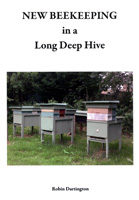
click image to zoom
In this work, the author explains his own use of a particular pattern of long hives which he has made to his own design, but which is derived from standard lines. The hives have been in use for ten years, which some bee keepers will say is not long enough to prove its efficiency. However, many different systems have been…




















































